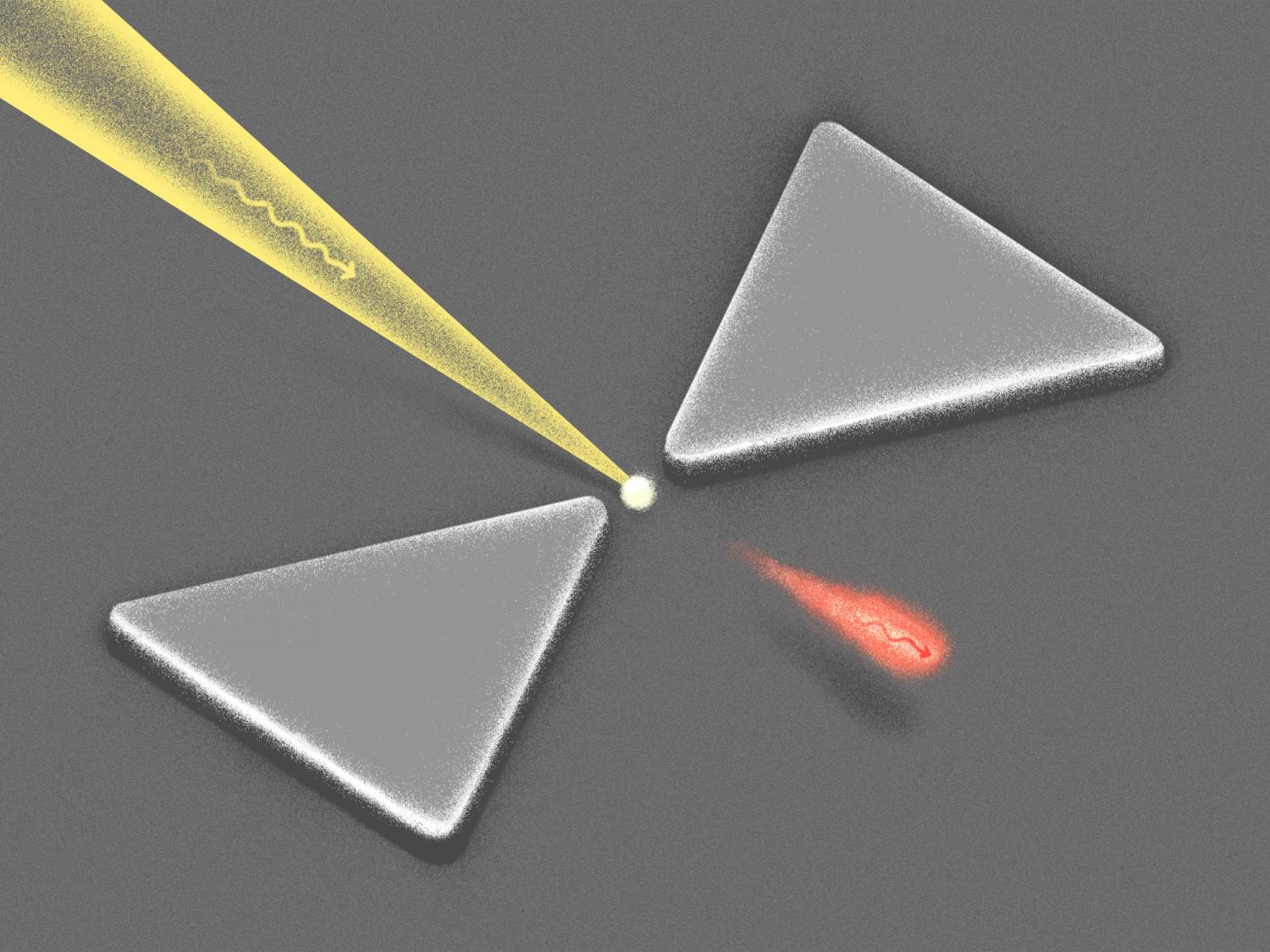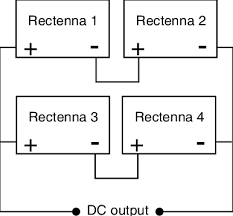(Nano-Telecommunication) Nano antennas of Rectenna system Rectenna wavelengths of 10 micrometers , ie frequencies around 90 terahertz
Researcher and author: Dr. ( Afshin Rashid)
Note: Since nano-antennas have the ability to absorb a wide angle, even if the sun is inclined to the surface of the solar panel, their efficiency is maintained to a considerable extent. The system can also absorb energy radiated from the earth, or ground radiation, which is caused by the sun's daily radiation to the earth's surface and occurs at wavelengths of 10 micrometers , ie frequencies around 90 terahertz.
For this reason, nano-antennas of the solar rectana system can generate electrical energy by collecting this radiation during the night or in bad weather conditions . At present, the diode and antenna structures used in the solar rectum are fabricated using the electron design method. Although this method of construction is costly and time consuming for production on laboratory and research scales, but if these structures are produced in large volumes and with the appropriate method , they will reduce the cost and speed of the manufacturing process. When a solar electromagnetic wave hits the surface of a nano-antenna, a time-varying current is generated on the surface of the nano-antenna, resulting in a voltage generated at the supply gap.
A dipole antenna with linear polarization and length 2 / λ, which has a relative bandwidth of 11%, will be able to collect about 75.2 pW. Due to the low power reception of each independent antenna, the use of anti-arrays in this cell is common, which also has its own rules and methods. The antenna is a device that can receive electromagnetic waves in space. To receive electromagnetic waves Solar by antenna The dimensions of the antenna should be in the order of the size of the input wavelength to its surface, so in order to receive solar radiation that includes wavelengths in the infrared, visible and ultraviolet region, an antenna with nanometer dimensions is needed. Optical nanoantennas for solar energy collection offer a practical solution that is more efficient than other common photovoltaic technologies such as solar panels, leading to rapid development in The industry has been nanotechnology and optical materials.
When a solar electromagnetic wave hits the surface of a nanoantenna, a time-varying current is generated on the surface of the nanoantenna, resulting in a voltage generated at its power supply slot. Optimal DC power is generated. In the solar rectane system, millions of nano-antennas with a suitable rectifier are placed next to each other and each of them generates electricity separately using sunlight. Conversion of solar light energy by The antenna is absorbed by a suitable rectifier. Suitable diodes for this frequency range are 12 MIMs.
Because nano-antennas have the ability to absorb a wide angle, their efficiency is maintained to a considerable extent even if the sun is inclined to the surface of the solar panel . The system can also absorb energy radiated from the ground, or ground radiation, caused by the sun's daily radiation to the earth's surface, occurring at lengths of 10 micrometers , or frequencies of about 90 terahertz, for this reason . Nanoantennas of the solar recton system can generate electrical energy by collecting this radiation during the night or in bad weather conditions .
Conclusion :
Combining optical antennas with a suitable rectifier system called Rectenna for short. It is used in nano-communications and power transmission in the microwave band. It is also used in the production of nano electrical energy.
Researcher and author: Dr. ( Afshin Rashid)
PhD in Nano-Microelectronics







